Don't be fooled - Print is still where it's at!
Discover the hidden benefits of print advertising!

Cassie Viele
Published Mar 27, 2018
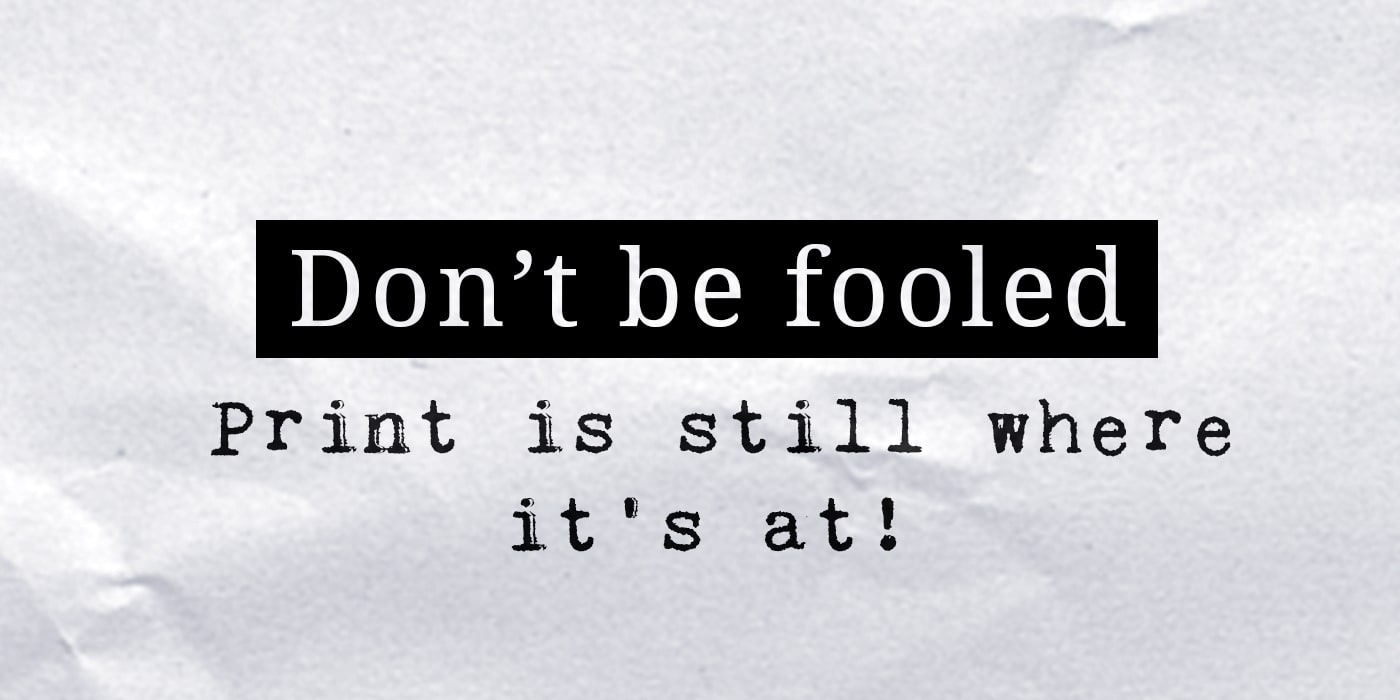 Let's face it - in this increasingly digital world, it has become all too easy to discount the power of the printed word (or picture!). Why not just throw your entire marketing budget into Google and Facebook ads? The simple answer is that there is more to print advertising than meets the eye. Digital marketing and its algorithms aren't the end all be all - a printed document actually beats a digital ad in more than one way. Check out these lesser-known facts about the print marketing industry before you divvy up your advertising budget pie...
Let's face it - in this increasingly digital world, it has become all too easy to discount the power of the printed word (or picture!). Why not just throw your entire marketing budget into Google and Facebook ads? The simple answer is that there is more to print advertising than meets the eye. Digital marketing and its algorithms aren't the end all be all - a printed document actually beats a digital ad in more than one way. Check out these lesser-known facts about the print marketing industry before you divvy up your advertising budget pie... 1. Smoke doesn't always mean fire.
You may think that the sheer number of users on the most popular social media platforms (2.46 billion social media users worldwide as of September 2017 according to Statista, with Facebook on top at 2.7 billion active users according to this interactive infographic as of the 2nd quarter of 2020) would guarantee the effectiveness of digital advertising on those sites, but that's simply not the case. One of our favorite marketing experts, Roger Dooley, wrote about this phenomena in the Forbes article "Paper Beats Digital In Many Ways, According To Neuroscience." He reviewed a stack of curated data, including a study that Temple University researchers conducted on behalf of the US Postal Service investigating the effect of different advertising formats on the way our brains process those ads.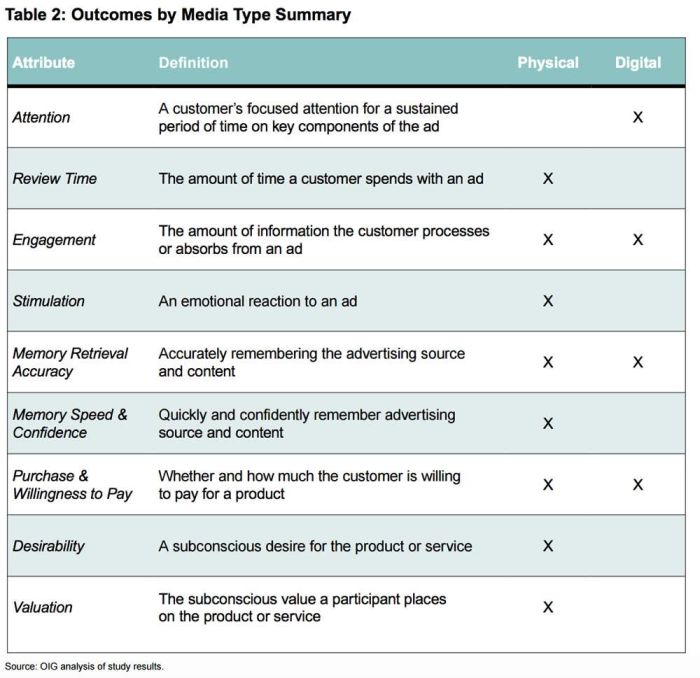 In the end, it wasn't a TKO for the hallowed digital ad industry. As it turns out, our brains LIKE paper materials better than their digital counterparts. Digital gets a win for that initial spark, but a print ad ultimately gets a longer and more emotionally impactful review.
In the end, it wasn't a TKO for the hallowed digital ad industry. As it turns out, our brains LIKE paper materials better than their digital counterparts. Digital gets a win for that initial spark, but a print ad ultimately gets a longer and more emotionally impactful review. 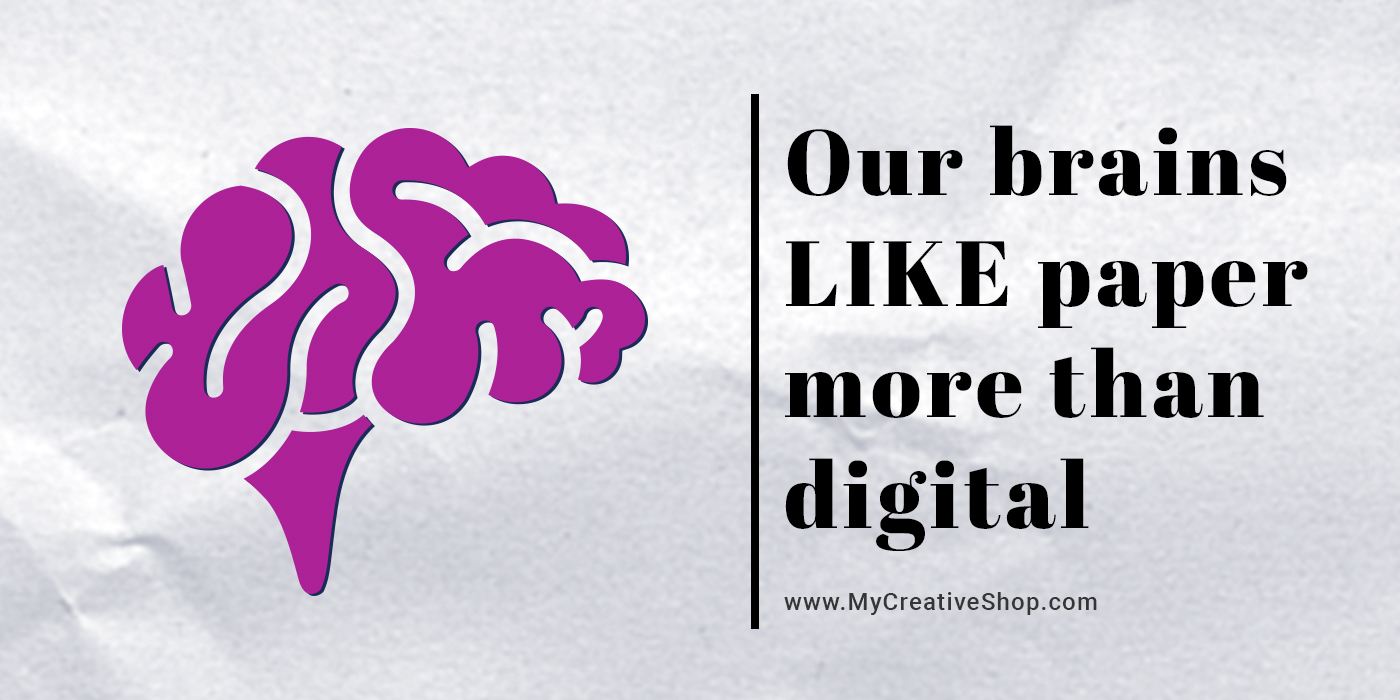 Paper also wins in our subconscious - that digital ad may provide the first flicker, but without the kindling effect of paper, that little bit of smoke will die out. Conclusion: Big user numbers sound impressive, but quality beats quantity every time!
Paper also wins in our subconscious - that digital ad may provide the first flicker, but without the kindling effect of paper, that little bit of smoke will die out. Conclusion: Big user numbers sound impressive, but quality beats quantity every time! 2. The algorithm is NOT always right.
Sometimes those targeted Facebook ads and their high-tech algorithms get it wrong - very wrong.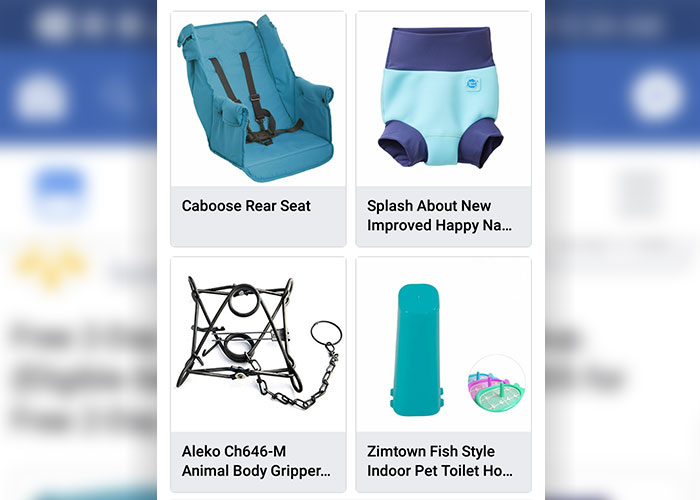 The above ad showed up in my Facebook newsfeed a few days ago. I should include that I am a mom of four kiddos, so the first two products in the collage aren't THAT odd. However, the addition of the indoor pet toilet and terrifying animal trap made for a very confusing ad strategy. What kind of parent do they think I am? SPOILER ALERT - I didn't purchase ANY of these products. And it's not just me - according to the Wall Street Journal, in Q2 2017, Procter & Gamble, one of the biggest advertisers in the world, cut their digital advertising budget by $100 million and saw little to no effect on their overall business. In a July 2017 earnings call with investors, P & G CFO Jon Moeller said we didn t see a reduction in the growth rate. What that tells me is that the spending we cut was largely ineffective. Moeller also said the cuts reflected [...] a choice to cut spending from a digital standpoint where it was ineffective, where either we were serving bots as opposed to human beings or where the placement of ads was not facilitating the equity of our brands. Conclusion: There's still no substitute for the human element!
The above ad showed up in my Facebook newsfeed a few days ago. I should include that I am a mom of four kiddos, so the first two products in the collage aren't THAT odd. However, the addition of the indoor pet toilet and terrifying animal trap made for a very confusing ad strategy. What kind of parent do they think I am? SPOILER ALERT - I didn't purchase ANY of these products. And it's not just me - according to the Wall Street Journal, in Q2 2017, Procter & Gamble, one of the biggest advertisers in the world, cut their digital advertising budget by $100 million and saw little to no effect on their overall business. In a July 2017 earnings call with investors, P & G CFO Jon Moeller said we didn t see a reduction in the growth rate. What that tells me is that the spending we cut was largely ineffective. Moeller also said the cuts reflected [...] a choice to cut spending from a digital standpoint where it was ineffective, where either we were serving bots as opposed to human beings or where the placement of ads was not facilitating the equity of our brands. Conclusion: There's still no substitute for the human element! 3. Print generates trust...
There's just something about paper - you can hold it in your hand, turn it over, hang it on the fridge or bulletin board, or simply leave it on the counter for your significant other to "notice" and act on. In October 2016, MarketingSherpa conducted a survey of 1,200 consumers, asking "In general, which type of advertising channels do you trust more when you want to make a purchase decision?" Print ads in newspapers and magazines topped the chart at a whopping 82%, followed closely by TV ads (80%), ads/catalogs received in the mail (76%), radio ads (71%), and ads in public places/outdoors such as posters or billboards (69%).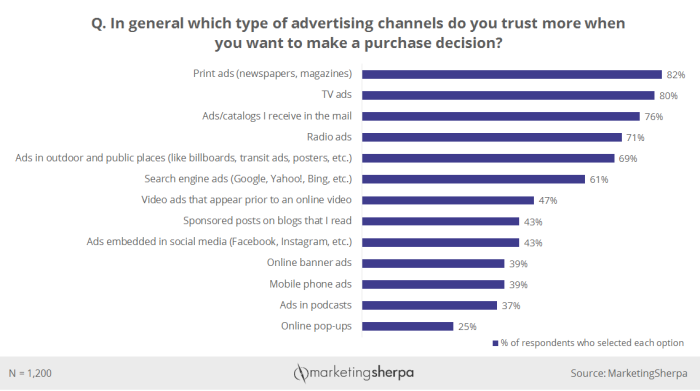 The top-five most-trusted formats were all tried and true "old-school" marketing tactics. Conversely, the bottom-eight (and, thus, least-trusted) advertising channels were all digital (from 61% trusting sponsored search engine ads on the high end down to a mere 25% trusting online pop-ups). In a world of fake news and click-bait, it's also a pretty safe bet that merely opening a print ad isn't going to send you down the rabbit hole with Alice to cyberspace Wonderland. No one likes to feel tricked or as though their privacy is being invaded, and print marketing creates trust simply by being an offline medium! Conclusion: If you want your audience to take your ad seriously, skip the screen and send it to the printer!
The top-five most-trusted formats were all tried and true "old-school" marketing tactics. Conversely, the bottom-eight (and, thus, least-trusted) advertising channels were all digital (from 61% trusting sponsored search engine ads on the high end down to a mere 25% trusting online pop-ups). In a world of fake news and click-bait, it's also a pretty safe bet that merely opening a print ad isn't going to send you down the rabbit hole with Alice to cyberspace Wonderland. No one likes to feel tricked or as though their privacy is being invaded, and print marketing creates trust simply by being an offline medium! Conclusion: If you want your audience to take your ad seriously, skip the screen and send it to the printer! 4. Direct mail can forge a connection...
When used judiciously, direct mail is still the third most-trusted advertising channel, according to the same MarketingSherpa study. Take the time to design a valuable postcard or other mailable advertisement (especially if you're expecting THEM to take the time to read it!) and ensure that you don't bombard potential customers with useless recycling box filler (24% of respondents indicated that they ignored direct mail because they receive too much overall, so do your part to keep the volume and frequency down and the recipients receptive!).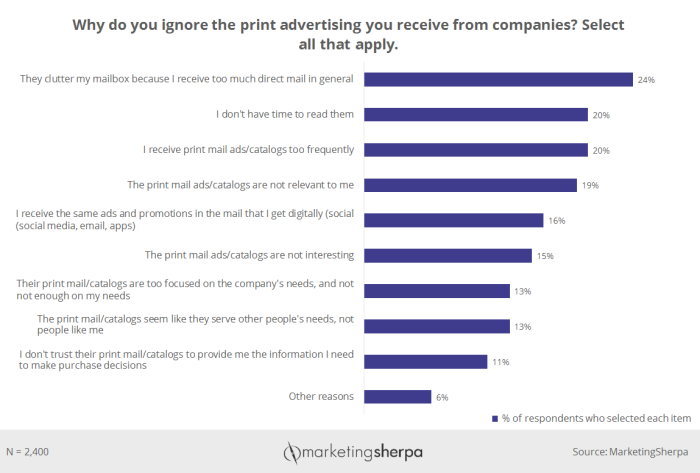 Dooley also points out in his article that "despite the enormous migration to electronic media, neuroscience research shows that paper-based content and ads offer special advantages in connecting with our brains." To back up his claims, he cites a study sponsored by Canada Post and performed by TrueImpact which found that "direct mail was easier to process mentally [than digital ads (21%)] and tested better for brand recall [(70%)]."
Dooley also points out in his article that "despite the enormous migration to electronic media, neuroscience research shows that paper-based content and ads offer special advantages in connecting with our brains." To back up his claims, he cites a study sponsored by Canada Post and performed by TrueImpact which found that "direct mail was easier to process mentally [than digital ads (21%)] and tested better for brand recall [(70%)]." 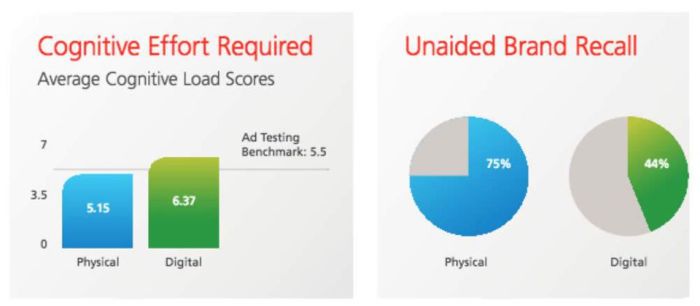 Conclusion: Getting something in the mail gets you in the door (literally and figuratively) of your target market's home (and heart!)
Conclusion: Getting something in the mail gets you in the door (literally and figuratively) of your target market's home (and heart!) 5. Print marketing can be fully controlled by YOU...
When you take the time to design your own marketing materials (or even if you hire a design firm), every aspect of the process is under your control. You choose who your ads are distributed to, what they say, and when they are received. There's no awkward placement or unusual ad combos (see my second point for just how awkward and unusual). Even better, printed materials can be handed out - in person - to potential customers or clients, which gives you the opportunity to cement yourself in their memory. As always, you never get a second chance to make a first impression, so it's important to go all out when you get the chance! Conclusion: An ad in hand is worth [at least] two in cyberspace!6. Print provides value...
Print marketing allows you to give recipients something of tangible value, whether that value comes from the emotional response generated (a heartwarming picture or a call to action), a timely reminder (file your taxes by April 15th, sale ends this weekend), or actual monetary savings (20% off coupon, BOGO shoe sale). Your printed materials can be hung up in homes and offices to be read and re-read over and over again. Printed marketing materials give you (the business owner/operator) something you can proudly display inside and outside the walls of your business. That sense of pride not only provides you with an internal reward, it translates to the customer - they can see your commitment to your company and its success. Taking pride in what you do creates value for both sides of the equation! Conclusion: Print is valuable all the way around!In the end, we do live in a digital material world - but we don't have to BE digital material girls (people)! The abundance of online ads, coupled with the growth of social media platforms and ever-increasing user numbers, does NOT negate the inherent value of the printed word (or photo!). Don't throw all of your marketing eggs into your digital basket - let a good number of print "eggs" hatch, flourish, and grow your flock. Remember, with print marketing, you're in control!